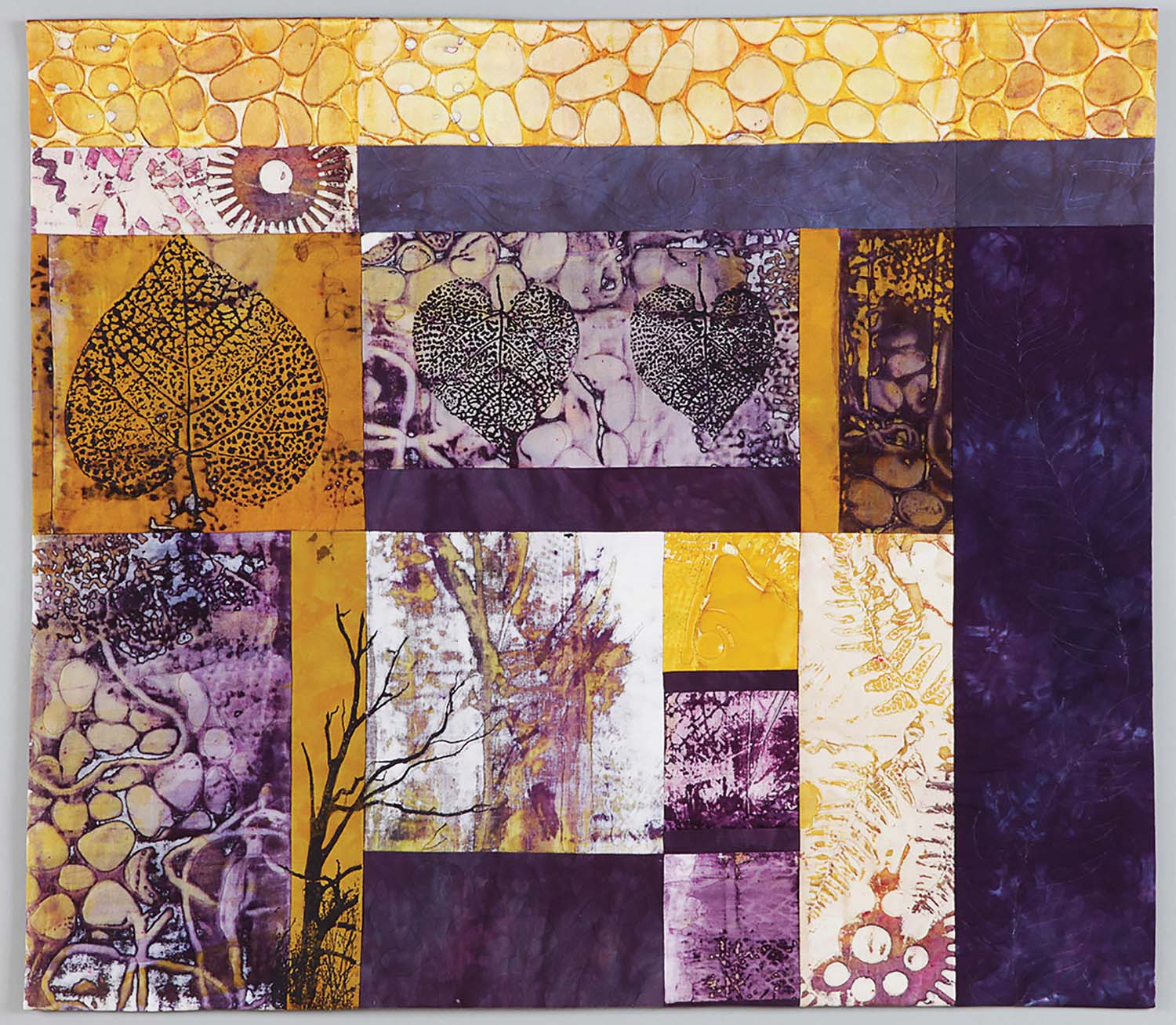
Judy Simmons began by making a traditional quilt. But she didn’t like working with a fixed pattern. So for the second one, she tried her hand at dyeing the fabric … and it didn’t go well. She’d used the wrong material, and the colors came out blotchy.
“That led me to learn more about surface design,” she recalls. This typically means enhancing plain white fabric with stenciling, silkscreening, and other textural embellishments.
Over the decades, Simmons developed a repertoire of unconventional techniques. She runs fabric through an inkjet printer. She’ll photograph leaves or trees and then Photoshop the images into line drawings to be silkscreened. She uses what’s known as deconstructive screen printing — getting a two-dimensional image off of a three-dimensional object. (The dyes transfer an impression of those objects to the fabric.) She’ll find mushrooms on a morning walk, for instance, and forage them for that purpose.
Many modern quilters use these techniques, Simmons explains, to create quilts to be framed as wall art. “Art quilts open up the field and allow you to make all the choices in designs and shapes. It’s just a different process. I love traditional quilts and do them once in a while. But I like the process of making fabric, and for me that’s a source of inspiration.”

Simmons claims there’s no discord among traditional quilters and those who use contemporary techniques. “I can absolutely say, with a clear heart, there’s no tension between us. Just lots of shared connection and respect. There is such a beautiful bonding. We are all doing different aspects of the same thing. It’s just part of growing and trying something different.”
Simmons further distinguishes her work by using artifacts of family history. A 100-year-old postcard once mailed to her grandmother is the basis for one small piece. She’s silkscreened photos from the 1930s, and pages from her grandmother’s handwritten family cookbook, for quilts.
Her grandmother was also her sewing muse. “I lived next to her, and she and my mother sewed all the time. By the age of five, I had my own fabric stash.”

Simmons studied clothing construction in college before embarking on a career as a public school teacher in the late 1960s. She still remembers her students fondly because they supplied the pieces of fabric for her first quilting project.
“My middle-school students are the ones who inspired me to go into quilting,” she says. “It was all new to me, but because I had a sewing background I was good at it. Since I had a teaching background, [too], I started giving quilting classes. I won some ribbons in shows and it started to snowball.” Three publishers approached her to write a book, and she complied, authoring two. She did TV appearances and led symposiums across North America.
Simmons also taught quilting in a most unlikely place: aboard cruise ships and on the Mississippi Queen steamboat. The cruises give their sewing instructors rock-star billing, advertising “National Quilting Teachers On Board.”
“It’s so funny,” she says. But she’s fine with it. “Quilters tend to be passionate,” she admits. At the very least, “it gives you something to do while out at sea.”
Judy Simmons, Woolworth Walk, 25 Haywood St., Asheville. Simmons also shows at Allanstand Craft Shop at the Folk Art Center, at the Southern Highland Craft Guild in Biltmore Village, and at the Parkway Craft Center at Moses Cone Manor. For more information about workshops, call 828-676-0620 or visit judysimmonsfiberart.com.
This is just beautiful, wonderful article!